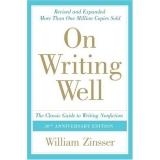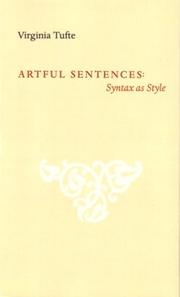On Writing Well: The Classic Guide to Writing Nonfiction

Buy online ($)
Type
Book
Authors
Zinsser ( William )
ISBN 10
0060891548
ISBN 13
9780060891541
Category
Publication Year
2006
Publisher
HarperCollins Publishers, United States
Pages
336
Abstract
In the first part of the book, which covers principles such as simplicity and conciseness, as well as style, usage, and vocabulary, Zinsser reproduces two manuscript pages showing how he revises and pares down his work. He emphasizes the necessity of repeatedly, mercilessly honing one’s prose and makes candid comments like, “Few people realize how badly they write.” Think of On Writing Well as a virtual boot camp for writers (though Zinsser refrains from hoarsely shouted verbal abuse).
Another example: When exhorting readers to refrain from affecting a writing style, he compares the affectation to wearing a toupee: “The problem is not that [the wearer] doesn’t look well groomed; he does, and we can only admire the wigmaker’s skill. The point is that he doesn’t look like himself.”
Another section deals with consistency of technique in such areas as perspective (first person, or third person?), tense (past tense, or present tense?), and mood (casual, or formal?), with the importance of strong introductions and conclusions, and a hodgepodge of mini-lectures on a wide array of topics from parts of speech to subject matter.
The third — and thickest — portion discusses the legitimacy of nonfiction as a literary form before delving in to guidance about how to craft interviews, travel articles, memoirs, scientific and technical writing, business writing, sports writing, criticism, and humor.
Finally, Zinsser explores voice as well as the hard work of writing, with an extended diagnostic passage about the evolution of a travel article he wrote.
Another example: When exhorting readers to refrain from affecting a writing style, he compares the affectation to wearing a toupee: “The problem is not that [the wearer] doesn’t look well groomed; he does, and we can only admire the wigmaker’s skill. The point is that he doesn’t look like himself.”
Another section deals with consistency of technique in such areas as perspective (first person, or third person?), tense (past tense, or present tense?), and mood (casual, or formal?), with the importance of strong introductions and conclusions, and a hodgepodge of mini-lectures on a wide array of topics from parts of speech to subject matter.
The third — and thickest — portion discusses the legitimacy of nonfiction as a literary form before delving in to guidance about how to craft interviews, travel articles, memoirs, scientific and technical writing, business writing, sports writing, criticism, and humor.
Finally, Zinsser explores voice as well as the hard work of writing, with an extended diagnostic passage about the evolution of a travel article he wrote.
Biblio Notes
IT
Number of Copies
1
| Library | Accession No | Call No | Copy No | Edition | Location | Availability |
|---|---|---|---|---|---|---|
| Main | 6 | 1 | No |


